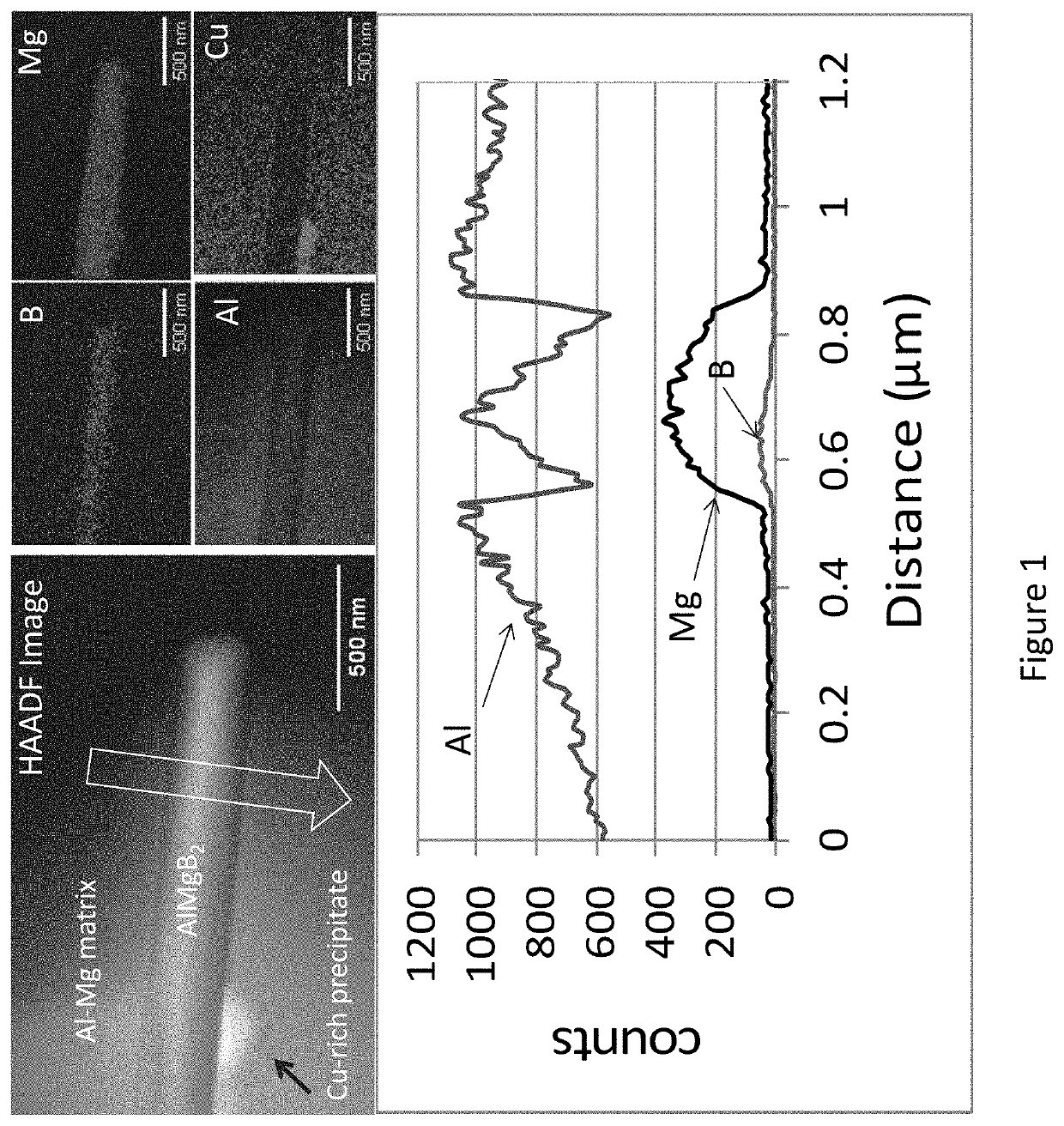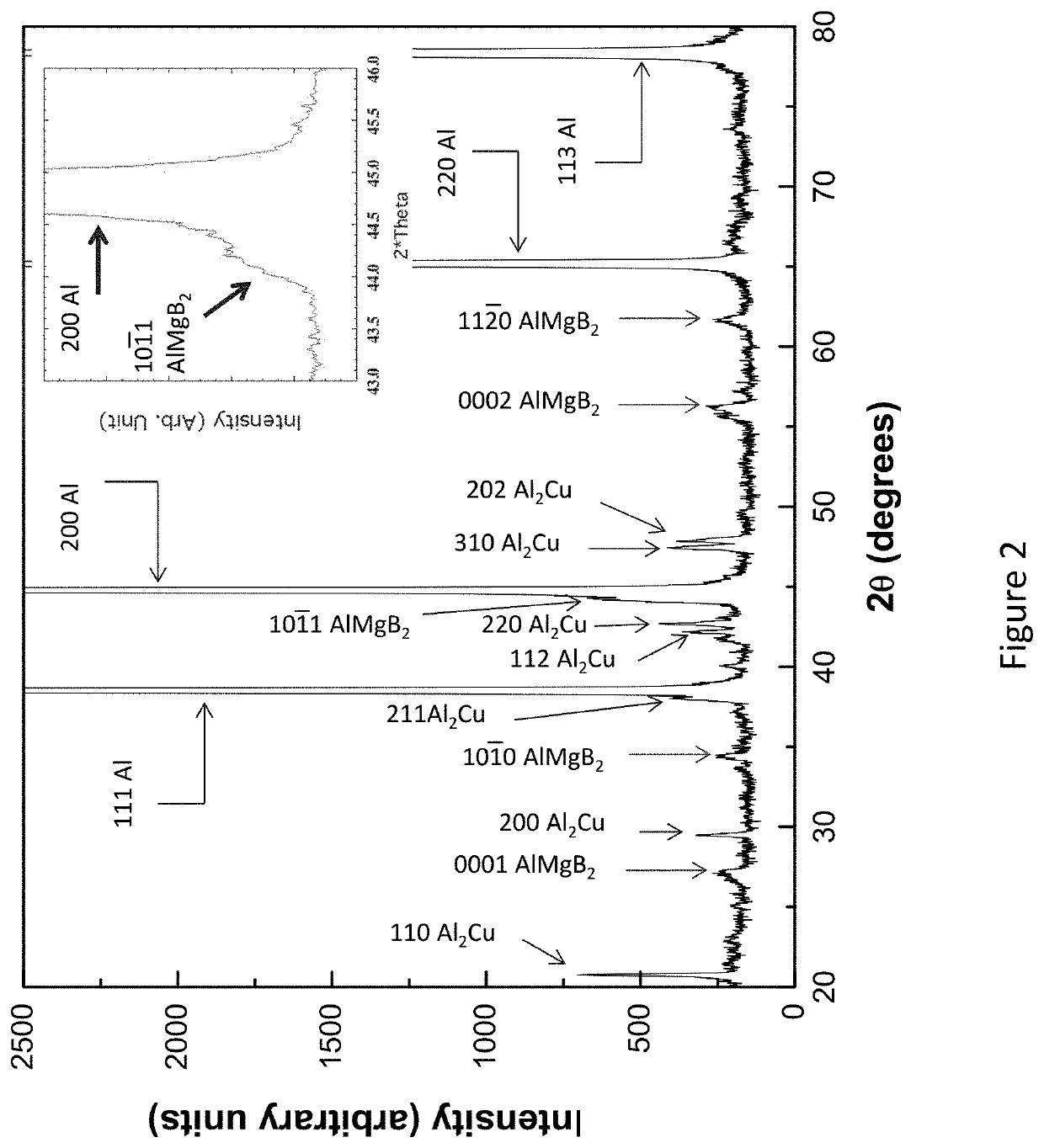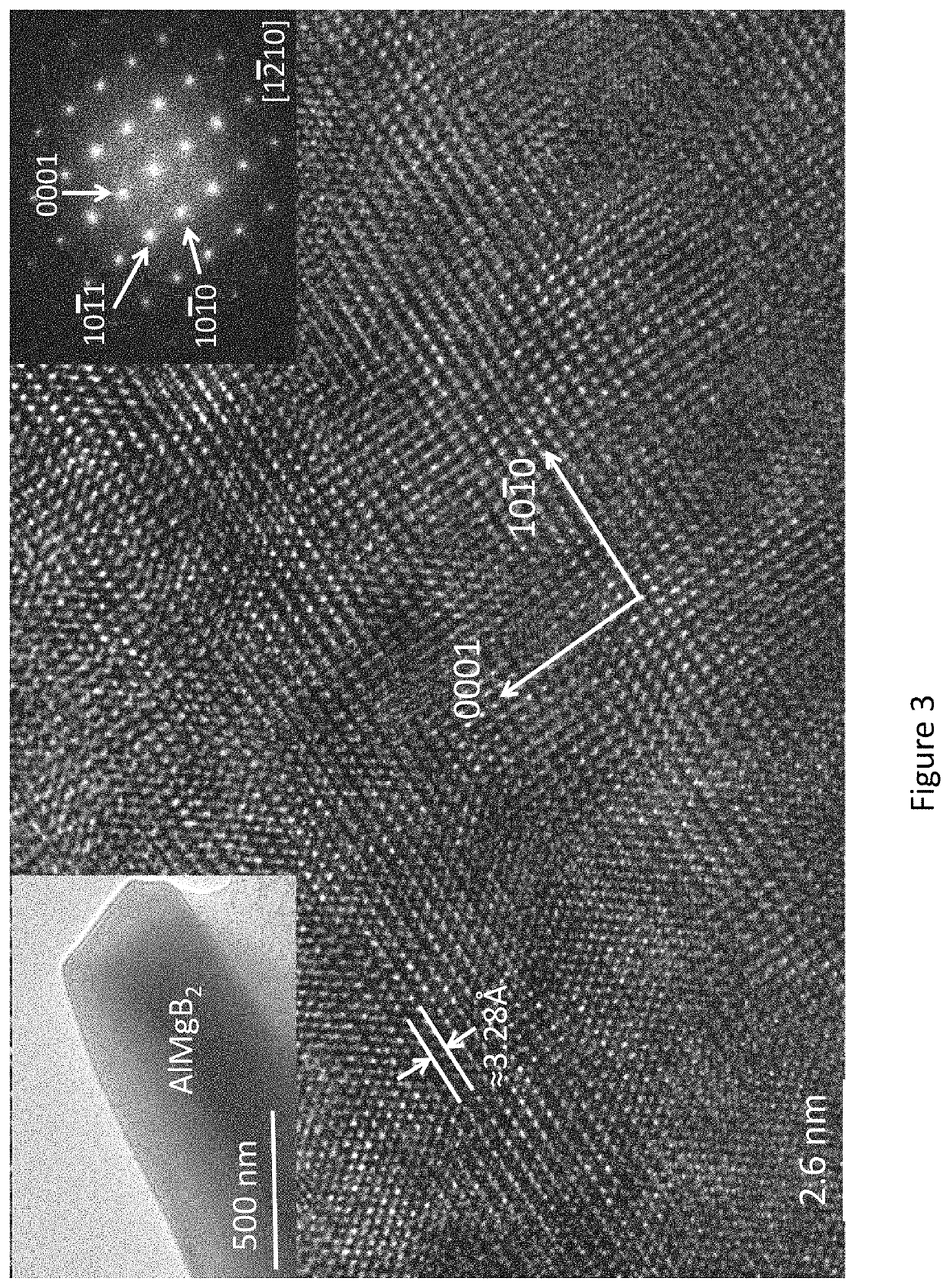Suppression of Samson Phase Formation in Al-Mg Alloys by Boron Addition
a technology of samson phase and boron addition, which is applied in the field of samson phase formation suppression in al-mg alloys by boron addition, can solve the problems of ineffective prior art methods for preventing inability to resist intergranular corrosion (igc) and stress corrosion cracking (scc), and inability to prevent the formation of grain boundary. to achieve the effect of reducing the longstanding problem of sensitization
- Summary
- Abstract
- Description
- Claims
- Application Information
AI Technical Summary
Benefits of technology
Problems solved by technology
Method used
Image
Examples
example 1
[0028]FIG. 1 shows the HAADF image of one such rod-like boride particle in an Al matrix in the as-cast condition. The fine-probe EDS map shows that it is a Al—Mg ternary boride particle with considerable amount of Mg.
[0029]The distribution of B, Mg, Al, and Cu in the boride particle and matrix is shown in FIG. 1.
[0030]A line scan, FIG. 1, across the particle shows considerable drop in Al counts close to the broad faces as compared to the core, suggesting that AlB2 forms initially during solidification and then Mg diffuses through the broad faces. In addition, Cu-rich precipitates, appeared bright in the HAADF image, were observed on top of the boride particle.
example 2
[0031]X-ray diffraction (XRD) clearly shows α-Al, Al2Cu and AlMgB2 upon extended annealing. In addition, a small volume fraction of Al—Mn—Cr—Fe type dispersoids exists in this alloy. Note that the peaks corresponding to 2θ=27.187 and 56.14 have been shifted to the lower angles as compared to the 0001 and 0002 of AlB2, suggesting that the c-parameter increases as a result of insertion of Mg in AlB2 lattice.
[0032]In fact, the c-parameter of the boride phase is 3.28 Å, while the a-parameter does not change significantly with respect to AlB2. Using Vegard's law, the ratio of Al and Mg in the ternary boride turns out to be 3:1.
example 3
[0033]FIG. 3 is a HRTEM image obtained from a portion of rod-like AlMgB2 particle showing the lattice fringes of 0001, 10-10 and 10-11 planes close to the [11-20] zone.
[0034]The corresponding fast Fourier transform (FFT) obtained from part of the image is given as a right inset, showing the 0001, 10-10 reflections with d-spacing 3.28 Å and ≈2.6 Å, respectively, which is consistent with XRD observations.
PUM
| Property | Measurement | Unit |
|---|---|---|
| lattice parameter | aaaaa | aaaaa |
| lattice parameters | aaaaa | aaaaa |
| volume fraction | aaaaa | aaaaa |
Abstract
Description
Claims
Application Information
 Login to View More
Login to View More - R&D
- Intellectual Property
- Life Sciences
- Materials
- Tech Scout
- Unparalleled Data Quality
- Higher Quality Content
- 60% Fewer Hallucinations
Browse by: Latest US Patents, China's latest patents, Technical Efficacy Thesaurus, Application Domain, Technology Topic, Popular Technical Reports.
© 2025 PatSnap. All rights reserved.Legal|Privacy policy|Modern Slavery Act Transparency Statement|Sitemap|About US| Contact US: help@patsnap.com



